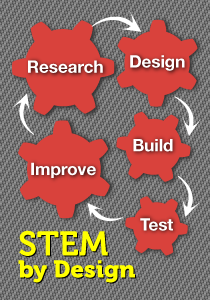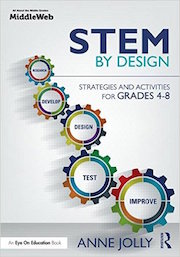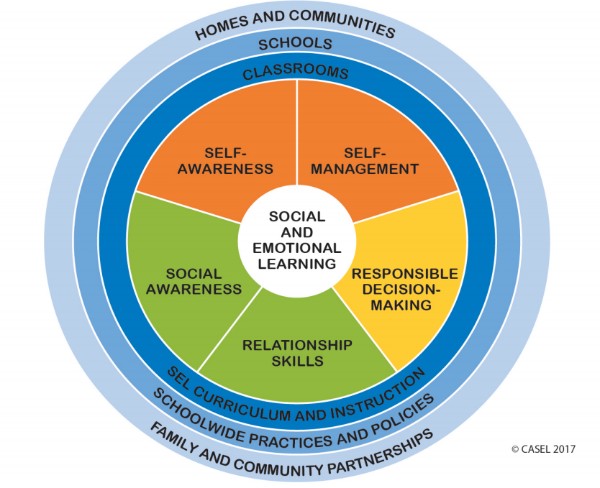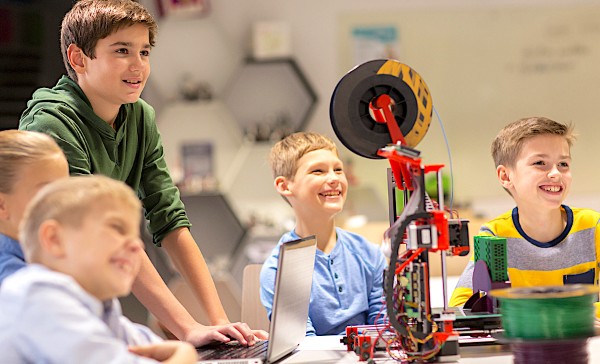Combine STEM and SEL for Student Success
A MiddleWeb Blog

About me, then . . .
When I began my teaching career a couple of unwritten rules seemed to govern classrooms.
- Content, content, content! Teachers are responsible for teaching academic content about a particular subject. (Translation: Just set students down and give ‘em the facts)
- Be wary of changes in curriculum and instruction. (Translation: Students and society always will have the same basic needs, so just ignore the new-fangled stuff – it, too, shall pass.)
At first, that way of thinking made sense to me – it jibed with the way I was taught. Before long, however, reality hit. I realized that my students’ basic needs actually were changing. The world around them was spinning with new energy, amazing digital tools, and escalating needs.
My students definitely needed a different kind of knowledge and skills to survive in a rapidly changing society. I didn’t just need to arm them with a toolkit of facts. I needed to empower them to be ongoing learners with the knowledge, attitudes and social skills to tackle the challenges of an unstable society.
About you, now . . .
You may be facing the same dilemma – how do you give your kids the learning environment and high-quality experiences that will enable them to be successful in their workplaces, communities, and lives? Since you’re reading this post, you may have adopted STEM as a way of answering that question. Great choice!
It’s not a big jump to see how STEM fills the bill with its focus on real world tasks tied to social challenges. But guiding students to master social and emotional skills like self-control, empathy, collaboration, and problem solving can be harder than teaching content. What’s a teacher to do?
Students need a foundation for successfully managing their behaviors and understanding their emotions. STEM teachers, to my way of thinking, are the daredevils who are already leading the way. They’re cutting through curriculum clutter to provide students with engineering challenges that help them build academic and SEL competencies.
But you, like other STEM teachers, might value a clearer understanding of how to best improve those important SEL skills in kids and how to create a plan for doing that.
CASEL (the Collaborative for Academic, Social, and Emotional Learning) is a useful place to start. I browsed the site and came across a well-researched downloadable guide for middle and high school. (There’s also a guide for preschool and elementary.) Hint: Click “PDF” on the righthand side of the guide for a better viewing experience.
CASEL focuses on five core competencies to help students build SEL skills. The site also features short, helpful videos to explain each competency. Another site – School-Connect – features essential skills that seem to be critical to everyday interactions and decisions.
While School-Connect bills itself as a high school site, these SEL competencies are for all kids, and School-Connect suggests ways of putting the competencies into action. (Note: School-Connect provides several free lessons and infographics; other resources require purchase.)
I’m going to do a quick mashup of the two to get the ball rolling for you, and you can go deeper by accessing these sites along with conducting your own Internet search.
Help your students grow in their abilities to:
- Build self-awareness. Your students must be able to identify and objectively consider their own emotions and thoughts, and to recognize how these affect their own behaviors.
- Manage emotions. Self-control and self-discipline are major SEL growth areas for kids. Once students recognize their emotions, they can develop ways for managing their impulses, stress, motivation, and actions.
- Build empathy. Teachers can help students learn to look at things from the perspective of others, show acceptance and respect, and appreciate diversity. Social skills are critical to students’ success. From my standpoint, caring is the most crucial social trait that today’s kids can develop.
- Cultivate healthy relationship skills. Your students need to be able to establish and maintain healthy relationships, communicate clearly, listen actively, cooperate, and deal constructively with conflict. Productive collaboration may be the most important relationship skill for them to master.
- Make responsible decisions. Kids must be able to reflect on multiple ideas and adjust their own thinking as needed. They need to practice identifying and analyzing problems, and to focus on developing solutions that are both effective and ethical.
- Develop resilience. More than ever, your students need to be able to bounce back from setbacks. Building persistence can pave their way to a more successful life. Help your students learn from their failures and guide them in using failures to redesign successful solutions.
- Set goals and organize. Guide your kids in working toward personal and academic goals, including STEM challenges. Strategies for doing this can carry over into other areas and give kids tools for managing their behaviors and emotions in life.
Take another look at that list. Doesn’t it just scream “STEM!?”
STEM projects are ideal for involving your students in designing, implementing, and evaluating solutions for social problems (health, environment, infrastructure). They give students opportunities to work on problems that meet real needs and problems that they genuinely enjoy working on.
As young people work together on projects, they have opportunities to grow in all of the SEL areas. The key is intentionality. Determine where to start with the SEL skills and begin intentionally integrating SEL strategies into each STEM project (and in your other classroom activities).
Likely, other teachers in your school are also interested in SEL skills and in taking a positive, systematic approach incorporating these skills into their classroom instruction.
Imagine if every teacher in your school worked together in a coordinated manner to build those capacities in kids. By the time kids left your school, they would be well on the road to being socially responsible citizens who could work together to improve their communities and beyond.
So to all you terrific STEM (and other) teachers, thanks for helping your students mature socially and emotionally. And if you ever wonder if you’re making a difference, take a look at this Edutopia article and believe it: SEL Is Good Teaching.







































